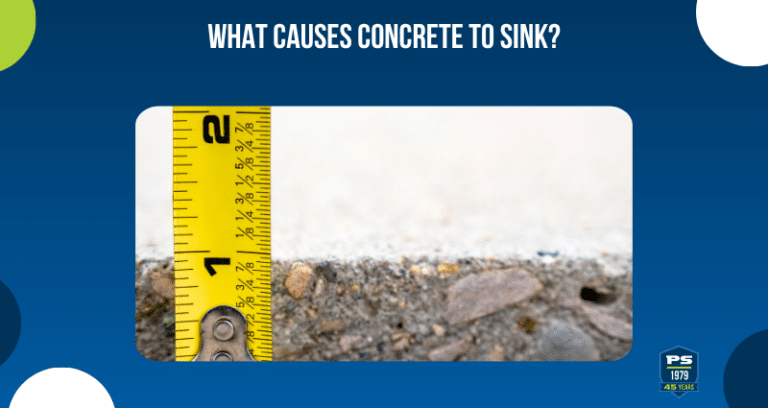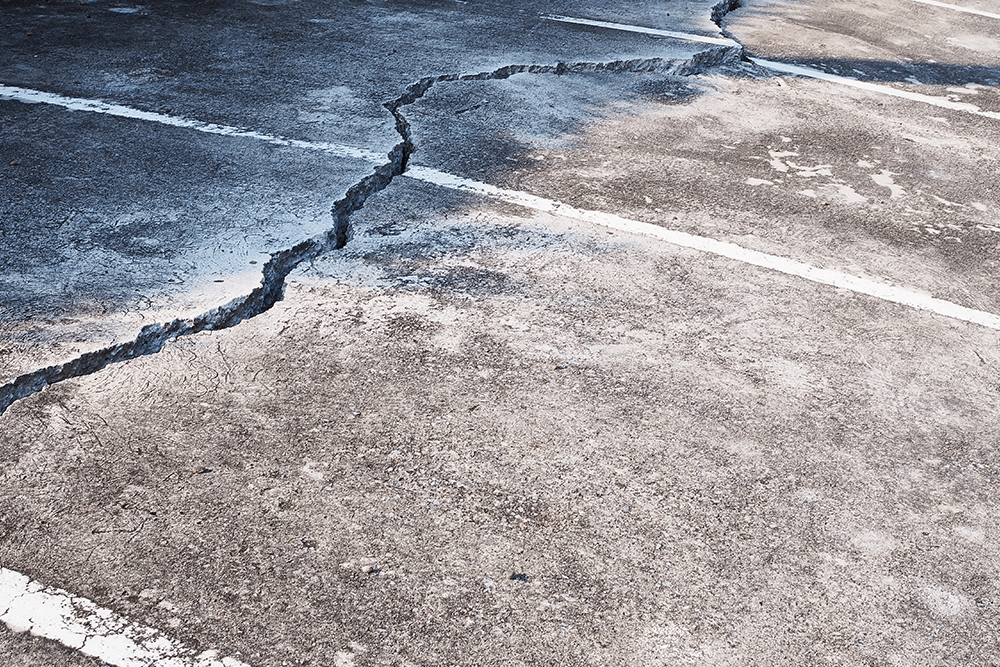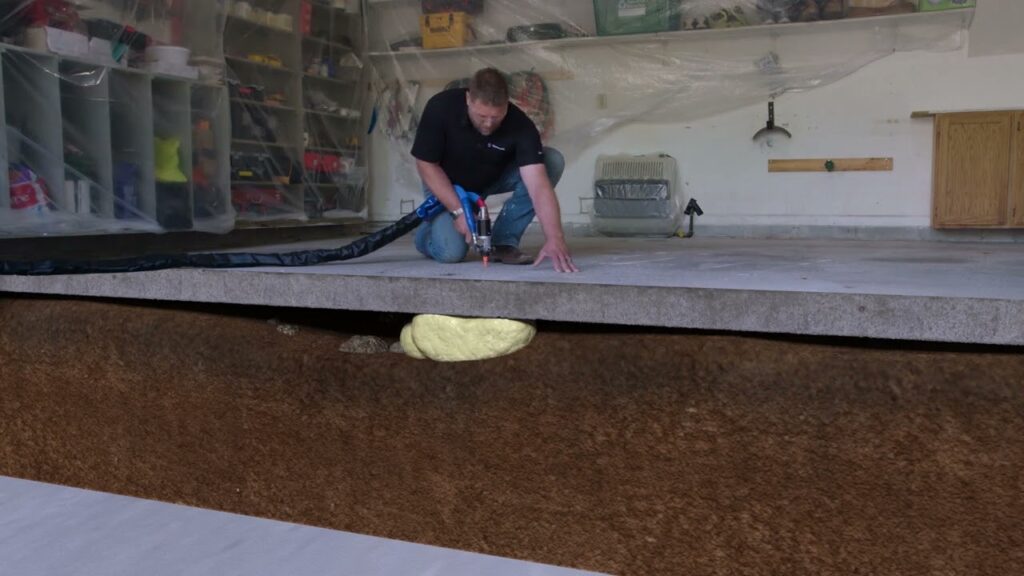
Concrete is known for its strength and durability, but it’s not immune to the forces beneath it. Over time, sidewalks, driveways, patios, and garage floors can begin to tilt, dip, or develop noticeable voids. These are signs that the concrete is sinking.
So what causes concrete to sink? And how does concrete leveling help solve it? Let’s break it down.
Why Concrete Starts to Sink
There’s always a reason concrete gives way beneath your feet. While each home or property may face unique conditions, here are the most common culprits behind sunken slabs:

1. Soil Washout and Erosion
Water is the most common enemy of stable concrete. When water from rain, poor drainage, leaky gutters, or broken pipes finds its way under a slab, it can gradually wash away the supporting soil. As this soil disappears, it leaves behind air pockets—voids—where the concrete eventually settles and sinks.
2. Poor Soil Compaction at Installation
When concrete is first poured, the ground beneath it should be tightly compacted to create a stable base. If this step is skipped or done poorly, such as in new construction or after utility trenching, the soil will compress over time under the slab’s weight, causing it to sink unevenly.
3. Freeze-Thaw Cycles
In colder climates like the Midwest, freeze-thaw cycles play a major role in concrete movement. As moisture in the soil freezes, it expands and pushes the concrete upward. When it thaws, the ground settles again. With years of repetition, this back-and-forth movement causes the slab to shift and sink.
4. Heavy Loads
Driveways, garage floors, and walkways bear the weight of vehicles, furniture, or equipment. If the underlying soil can’t support the load, it slowly compresses, leading to settlement and cracking.
4. Soil Type
Some soils, like expansive clay, shrink dramatically when dry and swell when wet. This constant expansion and contraction puts stress on concrete, often contributing to sinking or lifting.
How Concrete Leveling Fixes the Problem
Concrete leveling—also known as slab jacking or void filling—is a method used to lift and stabilize sunken concrete by addressing the issue beneath the surface.
Here’s how the process works:
Step 1: Drill Access Holes
Small holes (roughly the size of a coin) are drilled into the sunken area of the concrete. These serve as access points for lifting material to be injected.

Step 2: Inject the Lifting Material
A polyurethane foam or cement-based slurry is pumped beneath the slab. This material fills the voids, compresses loose soil, and begins to raise the concrete back to its original level.
Step 3: Precision Lifting
The injection process is carefully monitored to ensure a uniform lift. Technicians adjust the pressure and amount of material in real time to bring the slab back into alignment.
Step 4: Patching and Cleanup
Once lifting is complete, the access holes are filled and sealed, leaving behind a stabilized, level surface that’s safe to walk or drive on again, often within the same day.
Why It’s Better Than Replacement
Replacing concrete may seem like a permanent fix, but it comes with drawbacks—high costs, long cure times, and the risk of the new slab settling again. Concrete leveling, on the other hand, is minimally invasive, faster, and addresses the root cause: the unstable soil below.
Contact Us Today to Schedule A Free Inspection For Your Foundation
Sinking concrete is more than just an eyesore—it’s a sign of deeper issues below the surface. Understanding what causes it helps homeowners make informed decisions before the damage worsens. Whether you’re dealing with a slight slope in your sidewalk or major settling in your driveway, concrete leveling is a practical, effective solution to restore safety and functionality without starting from scratch.
If you have uneven concrete around your home we can help. Call us today at 800-421-7325 or request a free consultation online!







